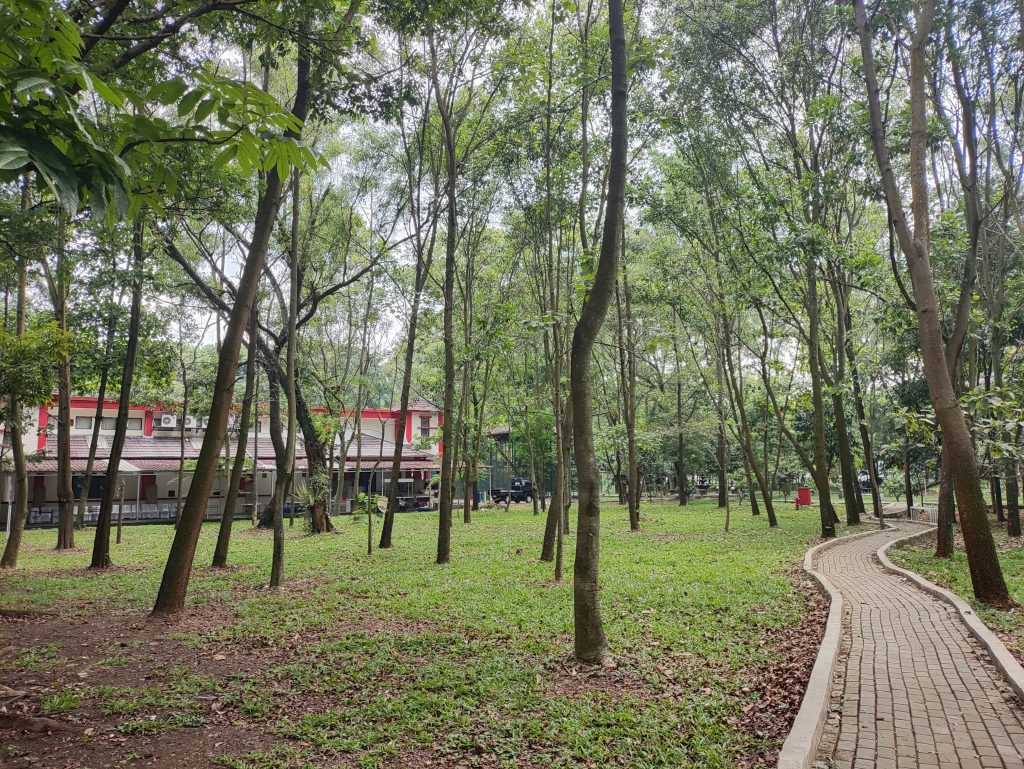
As an educational institution that prioritizes innovation and sustainability, Telkom University continues to be committed to realizing a green and environmentally friendly campus environment. One of the real steps of this commitment is the campus greening program through tree planting and green area management which aims to create a healthier, more comfortable space and support the natural ecosystem. This initiative is not only an effort to beautify the campus, but also part of the campus’s grand vision to build a sustainable Green Campus.
Greening is an Important Step for Green Campus
Reforestation is the process of replanting land or a certain area with trees or green plants to improve environmental conditions. In the context of Green Campus, reforestation has many benefits for the environment, including:
Absorbing carbon dioxide (CO2):
Trees can absorb carbon dioxide and produce oxygen, which is important for reducing air pollution and maintaining clean air quality in the campus environment.
Regulating micro-temperature:
Green areas help lower the temperature of the surrounding environment through the process of evaporation and filtering sunlight, creating a cooler microclimate around the campus.
Supporting biodiversity:
By planting various types of plants and trees, the campus can become a habitat for local wildlife, including birds and insects that are important to the ecosystem.
Preventing soil erosion:
Tree roots help hold the soil so that it is not easily eroded by rainwater, especially in areas with sloping land contours such as in Bandung.
Improving quality of life:
Green spaces create a healthier environment, supporting mental and physical well-being for students, lecturers, and the entire academic community.
Manfaat penghijauan ini menunjukkan bahwa proses penanaman pohon dan perawatan area hijau bukan hanya soal estetika, tetapi juga langkah penting dalam menjaga keberlanjutan lingkungan.
Planting Trees for a Greener Future
One of the main programs in the Green Campus initiative at Telkom University is planting trees in various areas of the campus. This planting is carried out in stages, involving students, staff, and the surrounding community to participate in the greening process. Several types of trees planted were chosen because they are suitable for the climate and soil conditions in Bandung, and have long-term ecological benefits.
Telkom University also provides an understanding to the campus community about the meaning of greening and the 5 benefits of greening, so that all parties understand the importance of their role in protecting the environment.
Positive Impact of Greening for Campus and Surrounding Community
The greening program at Telkom University has had a real impact, both for the campus and the surrounding community:
Better air quality: Planted trees help absorb air pollutants and produce oxygen, providing fresher air for all campus residents.
A cooler environment: Large green areas create a cool atmosphere around the campus, providing comfort for students and staff.
A healthy ecosystem: A green campus supports a variety of life, from birds, insects, to soil microorganisms that are important for ecosystem balance.
Enhanced environmental awareness: Through the greening program, students are encouraged to care more about the environment and actively participate in maintaining sustainability.
Towards a Sustainable Green Campus Future
Greening is just one aspect of the Green Campus initiative that Telkom University continues to develop. The campus plans to expand green areas, plant more trees, and develop other sustainability programs such as recycling, water management, and energy efficiency. All of these steps are taken to ensure that the campus is not only a place to learn, but also an example of an institution that cares about the environment.
With its commitment to greening and other environmentally friendly initiatives, Telkom University proves that innovation and sustainability can go hand in hand. This program is expected to inspire other campuses to participate in protecting the environment for a greener and more sustainable future.

Leave a Reply